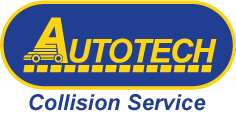Almost all modern vehicles have some type of standard safety or “ADAS” equipment. “Advanced Driver Assistance Systems,” or more frequently called ADAS, are the latest smart features built into your car to avoid collision and increase your safety. These various safety features alert you through a complex system of cameras, radar, sensors and onboard computers if they detect driver inattentiveness or if you car is in dangerous proximity to surrounding objects. Some of the most common ADAS systems are the following:
- Back up cameras
- Blind spot sensors
- Forward collision warning
- Lane departure warning
- Adaptive cruise control
- Emergency braking
The complicated network of ultrasonic, camera, and radar works together to alert a driver to avoid an accident. These various sensors and their placement are necessary for the ADAS safety features to properly operate to “see” what’s happening around your vehicle. In 2018, the NHTSA made rearview cameras a requirement for all new vehicles because of the alarming number of people killed annually from backover accidents. That doesn’t include the 14,000 injuries contributed to rear related accidents.
What Is ADAS Calibration?
According to AAA, “an ADAS calibration is a process carried out to correctly align the cameras and sensors of a car so that its ADAS system can work as intended.” ADAS calibration needs to be precise so specialized equipment is required. This also means it is imperative to use highly trained technicians that follow each unique manufacturer protocol for ADAS realignment. Each ADAS sensor is strategically positioned so it can perform the intended safety function. If the position of these cameras or sensors is altered in any way, calibration will be required to ensure its accuracy and timing to alert the driver is quick enough to avoid another collision. In fact, “…a sensor on the car that is out of alignment by a fraction of an inch or even one degree will be aimed at an area significantly off-axis 50 or more feet down the road.” (AAA)
Even a minor accident in a parking lot can put you at serious risk for being in another accident since it could jostle a sensor out of place. You want to be sure you take your vehicle to a body shop that knows the importance of ADAS calibration and employs technicians who are trained properly to handle the equipment.
Failure to properly calibrate a sensor can also cause the following:
- Increased steering effort
- Steering wheel vibration
- Vehicle steering pull
- Diagnostic trouble codes, commonly known as “DTC,” stored in the vehicle’s computer system.
What does ADAS Recalibration Involve?
Every manufacturer (this GM, Ford, Honda, Toyota etc) integrates ADAS in their car designs differently which means they each have their own protocols for repairing and calibrating these systems. They all will require that the sensors are aimed at recalibration targets to update the system but may stipulate their own methods to achieve this. Recalibration using targets is done by hooking up a scanning device to your vehicle’s OBD port and is monitored by a certified technician (sometimes remotely). The process is tedious and time consuming but failure to follow these steps might result in an unsafe repair causing these sensors to no longer function properly.
When is an ADAS Calibration Needed?
Anytime your car has been in a collision, even if its just a fender bender, you may need ADAS calibration. A good body shop will check the sensors in areas that don’t appear to be damaged because of how they are integrated into your car may mean they can’t properly communicate if one sensor is slightly off. Anytime a repair includes wheel alignment, windshield replacement, suspension repairs, change in tire size, or car roof repair it can affect the sensors throughout your vehicle that work together in a complex network. If one is altered, they all may not be able to alert you properly.
Lastly, ADAS calibration will be needed “when there is a related DTC in the car’s computer memory” or following any technical repair procedures laid out by a manufacturer. A DTC stands for Diagnostic Trouble Code and those are stored in the vehicle’s computer memory every time there is an issue with any of the ADAS systems.
Who in Sewell Knows How To Perform ADAS Calibration for my car?
At Autotech Collision, we know that ADAS calibration is imperative for your safety and protecting the value of your car. Our highly trained technicians have the specialized knowledge to perform an ADAS calibration to ensure you and your passengers will continue to be protected. We always follow the manufacturer protocols to ensure your repair is accurate.



